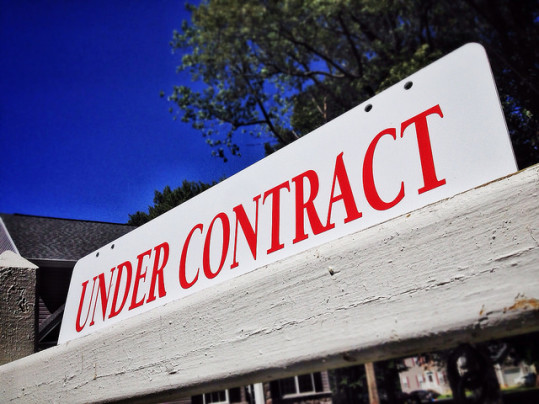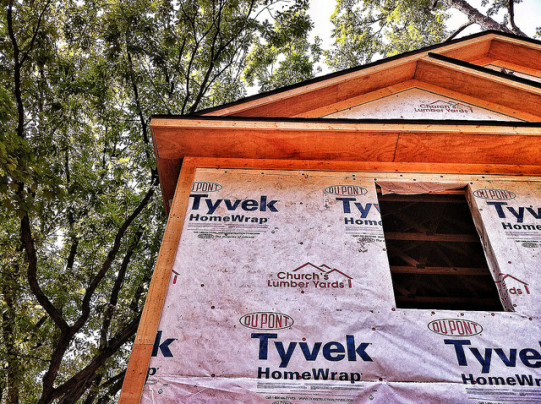The residential real estate market’s rebound following the housing crash has been gradual, with month-over-month volatility sometimes masking the fact that things were getting better one small step at a time. Year-over-year results, on the other hand, have consistently revealed the slow upward grind of housing markets across the country. As proof of that, Freddie Mac’s most recent Multi-Indicator Market Index – which compares current conditions to long-term norms in each of the 50 states and the top 100 metropolitan areas – found that 88 percent of metros are showing an improving three-month trend. Additionally, 46 of 50 states are trending upward. Len Kiefer, Freddie Mac’s deputy chief economist, says the improvement has been consistent, if varied from region to region. “Nationally, MiMi in May registered 85, a 7.3 percent year-over-year increase and the 49th consecutive month of year-over-year increases,” Kiefer said. “Many of the Western markets continue to see strong home sales. However, it’s the Southern states where MiMi continues to register some of the strongest gains buoyed by an improving employment picture. For example, the majority of Southern states showed stronger employment growth than the national average and all of the eight markets in Florida that MiMi tracks are now back to their historic benchmark levels of housing activity.” More here.
Archive for July 2016
Pending Sales Hold Steady In June
Pending home sales are an important indicator of the housing market’s health because they measure contract signings, not closings. Since signings typically precede closings by a few weeks, pending sales are seen as a good predictor of where future home sales numbers will fall. In June, the National Association of Realtors found pending sales up just 0.2 percent over the month before. Lawrence Yun, NAR’s chief economist, said there are not enough homes available for sale and it’s preventing interested buyers from taking advantage of otherwise favorable conditions. “With only the Northeast region have an adequate supply of homes for sale, the reoccurring dilemma of strained supply causing a run-up in home prices continues to play out in several markets, leading to the last two months reflecting a slight, early summer cool down after a very active spring,” Yun said. “Unfortunately for prospective buyers trying to take advantage of exceptionally low mortgage rates, housing inventory at the end of last month was down almost 6 percent from a year ago, and home prices are showing little evidence of slowing to a healthier pace that more closely mirrors wage and income growth.” Still, despite contract signings slowing in June, sales of previously owned homes are expected to finish the year at the highest annual pace in 10 years. More here.
Mortgage Rates Increased Last Week
According to the Mortgage Bankers Association’s Weekly Applications Survey, average mortgage rates rose across all loan categories last week, including 30-year fixed-rate loans with both conforming and jumbo balances, loans backed by the Federal Housing Administration, and 15-year fixed-rate mortgages. The increase slowed mortgage demand, especially refinance activity. Michael Fratantoni, MBA’s chief economist, told CNBC activity has been up-and-down lately, despite the fact that rates are well below where they were last year at this time. “Despite the 30-year fixed mortgage rate being almost 50 basis points lower than a year ago, refinance activity has been extremely sensitive to rate increases as the pool of borrowers who can benefit from refinancing continues to diminish,” Fratantoni said. But it wasn’t just refinance activity, demand for loans to buy homes was also down, dropping 3 percent from the week before. Still, total mortgage application volume is up 42 percent from the same week one year ago. And though that increase can partly be credited to rising refinance demand spurred by declining mortgage rates, home sales are also up over last year. The MBA’s survey has been conducted weekly since 1990 and covers 75 percent of all retail residential mortgage applications. More here.
New Home Sales Up 25% Over Last Year
In June, sales of newly built, single-family homes reached their highest level since 2008, according to new numbers from the U.S. Census Bureau and the Department of Housing and Urban Development. The 3.5 percent increase from May puts new home sales 25.4 percent higher than they were at the same time last year. Combined with increasing sales of previously owned homes and a bump in residential construction, the improvement indicates the housing market is gaining strength. In fact, not only were June’s figures higher than economists’ expected, May’s estimate was revised upward as well. However, despite the encouraging news, a closer look at the numbers shows the gains were not evenly distributed throughout the country. For example, the Midwest and West both saw increases of just over 10 percent. On the other hand, the Northeast fell 5.6 percent and the South was basically flat from the month before. Also in the report, the median price for a new home rose 6.1 percent from last year. The median sales price in June was $306,700; the average price was $358,200. But though prices were up, so was inventory. The number of new homes available for sale increased 1.2 percent over the month before. More here.
Real Estate Remains Top Investment Choice
Any investment comes with its own set of risks. But, according to a new survey, Americans feel real estate is the safest place to invest their money long term. The survey, conducted by Bankrate, asked participants to choose what they felt would be the best place to invest money they wouldn’t need for the next 10 years. Results showed respondents chose real estate first among options that included the stock market, gold or precious metals, bonds, and cash investments such as savings and CDs. In addition, the survey found that real estate was the top choice across all age groups, with Americans between the ages of 26 and 35 just as likely as older participants to choose it over other investments. Behind real estate, cash investments came in a close second while the stock market tied for third with gold and precious metals. Considering the stock market’s recent record highs, it is somewhat surprising that it came in third. However, because stocks aren’t a tangible asset like real estate, they are often perceived as more tumultuous and risky. The results seem to indicate that Americans, after years of economic uncertainty, are feeling cautious and are turning to real estate, savings, and CDs because they provide a sense of stability stocks can’t match. More here.
Mortgage Rates Mixed As Demand Falls
According to the Mortgage Bankers Association’s Weekly Applications Survey, demand for mortgage applications fell last week, dropping 4.1 percent from the week before. The decline included a 4 percent decrease in the refinance index and a 5 percent drop in demand for applications for loans to buy homes. Still, purchase application demand is 28 percent higher than the same week last year and mortgage rates remain near historic lows. Michael Fratantoni, MBA’s chief economist, told CNBC that some of the volatility in the mortgage market is due to uncertainty about whether or not the Fed will raise interest rates this month. “Market expectations for a June Fed hike have increased recently leading to a flattening of the yield curve, as short-term rates have risen more than longer-term rates,” Fratantoni said. “As a result, we saw an increase in rates for 15-year mortgages last week, even as rates on 30-year loans remained unchanged.” In fact, average mortgage rates fell for both 30-year fixed-rate mortgages with jumbo balances and loans backed by the Federal Housing Administration. On the other hand, rates for 30-year loans with conforming balances were unchanged from the week before and 15-year fixed-rate mortgages increased. The MBA’s weekly survey has been conducted since 1990 and covers 75 percent of all retail residential mortgage applications. More here.
Housing Market Continues Down Familiar Path
The housing market has been fairly steady for quite a while now. Mortgage rates have stayed low while prices continue to rise. In many markets, there are too few homes available for sale – and though affordability conditions have been affected by increasing prices and tight inventory – an improved job market, low rates, and the growing number of Americans who say they want to buy a house have kept things moving forward. So what should you expect for the rest of this year? Well, according to Fannie Mae’s Economic and Strategic Research Group, more of the same. Doug Duncan, Fannie Mae’s chief economist, says they expect interest rates to remain low through next year helping to support continued gains for the real-estate market. “We still expect moderate housing expansion for 2016. While new home sales have pulled back from their expansion-best, existing home sales rose to the highest level in more than nine years amid the largest year-over-year drop in for-sale inventory since October of 2015,” Duncan said. “Without relief from new construction, housing inventory will likely remain tight, boosting home prices and constraining affordability.” In other words, the housing market should continue to see gains, though they will remain gradual until new home construction picks up and prices begin to moderate. More here.







